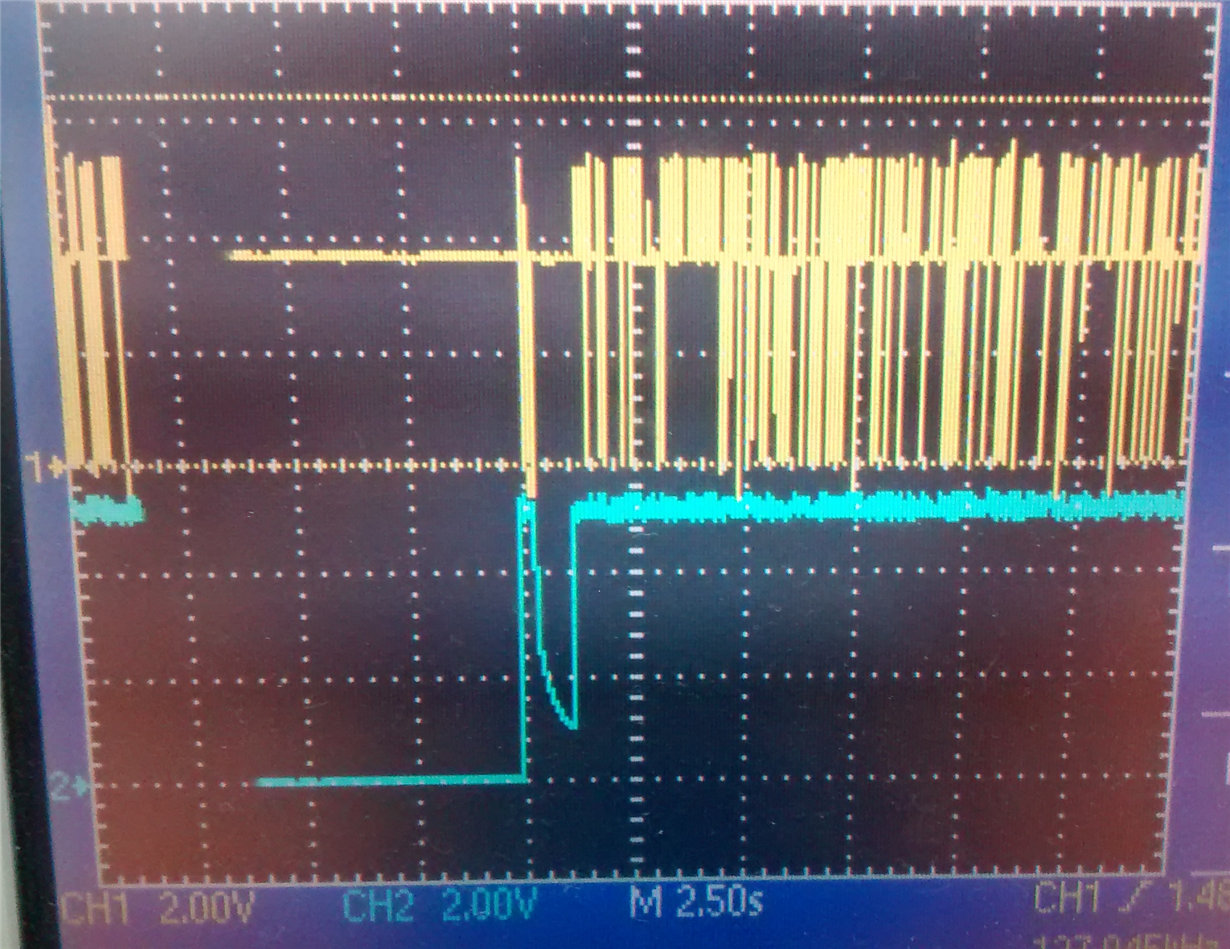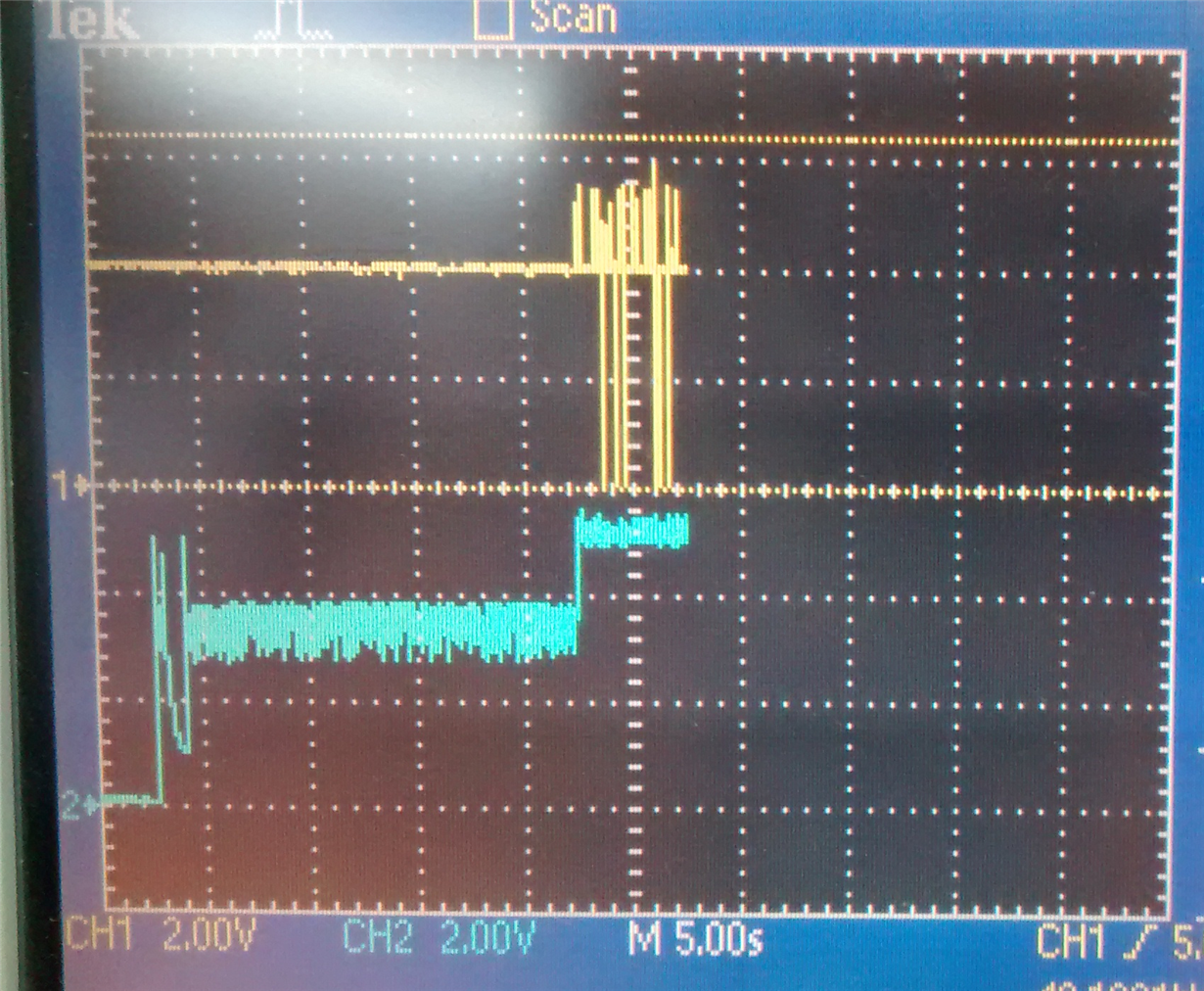Hi all,
I'm having issues with the output voltage of a fixed voltage boost converter (TPS61027 - 5V). Our design is similar to the one on Figure 25 of the datasheet, except we do not use LBI and LBO (LBI is connected to VBAT and LBO is left floating) and EN comes from a microcontroller. This circuit is powered by a single cell lithium ion battery.
When I measure VOUT right after we enable the circuit I get different values if I have a (somewhat) full battery and if I have a "less full" battery. With a 4.05V battery I measured 3.3~3.4V at VOUT immediately after I enabled the circuit. With a 3.7V battery I got ~5.12V. I initially thought that it was not working, but as I monitored the output I realized after some time VOUT would finally go to the desired 5V.
Looking at VOUT and SW with an oscilloscope, I can see that the output gets to 5V when the circuit starts switching (about 18 seconds after enabling it) (I attached 2 images of the 2 different situations). The first drop is related to the connection of the load. (Yellow signal is SW and blue is VOUT).
Is there any know issue about this behavior? Could this be a result of the power saving mode?



